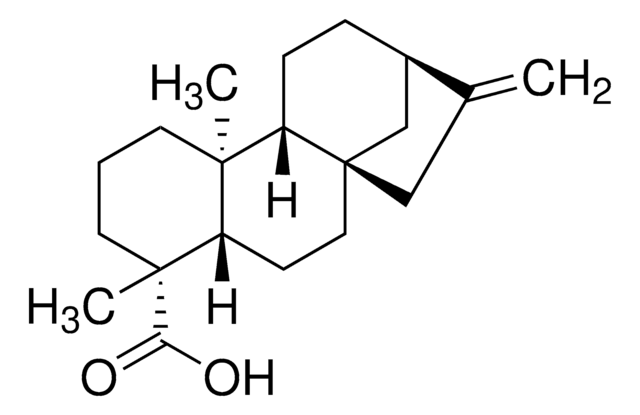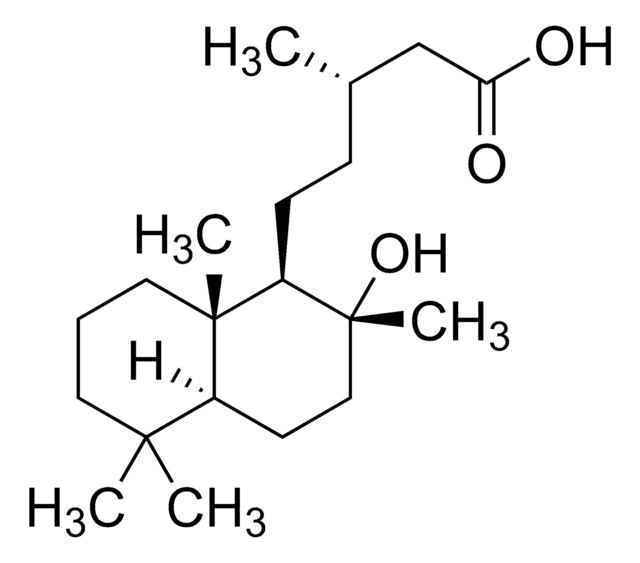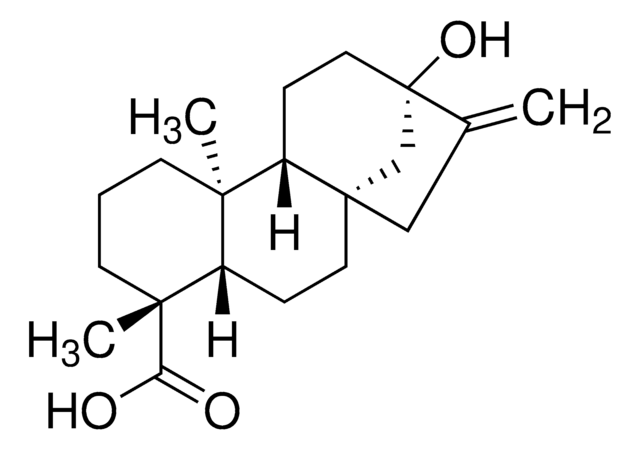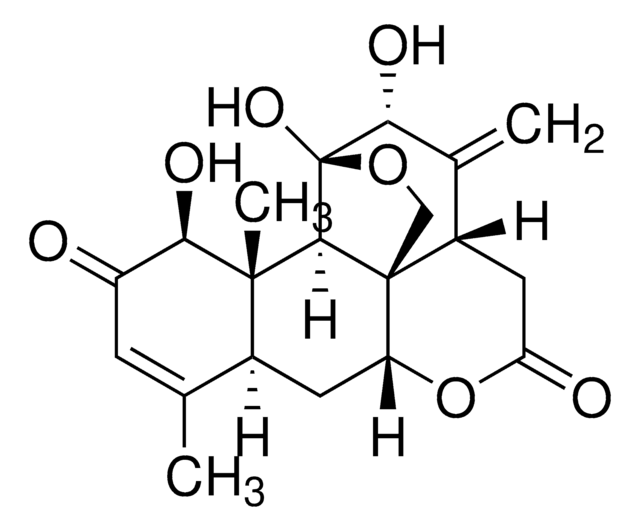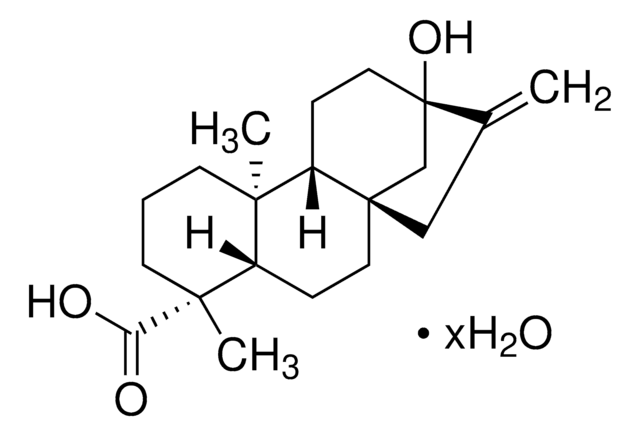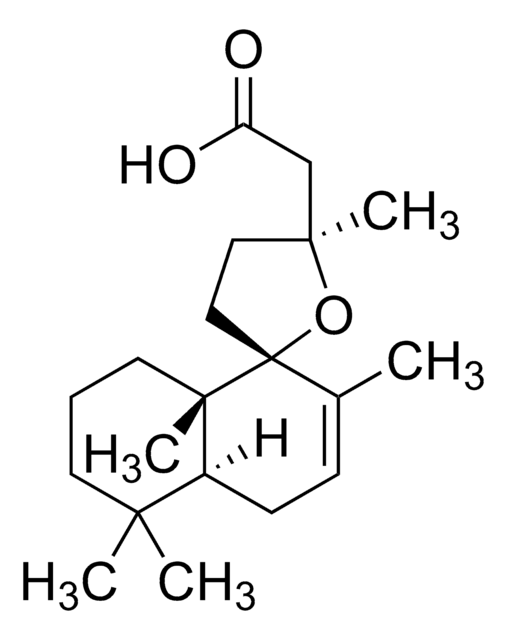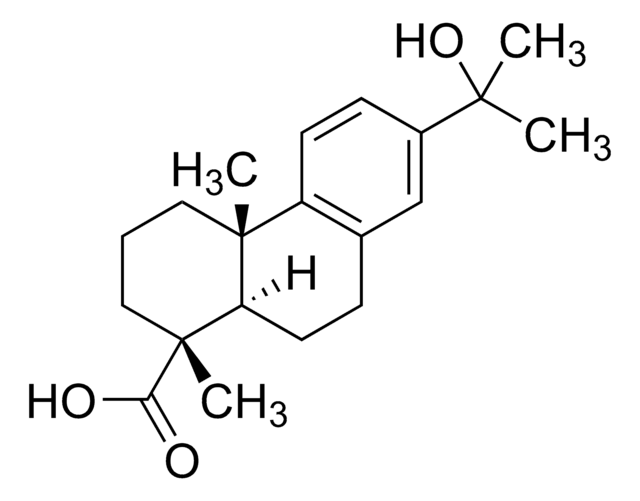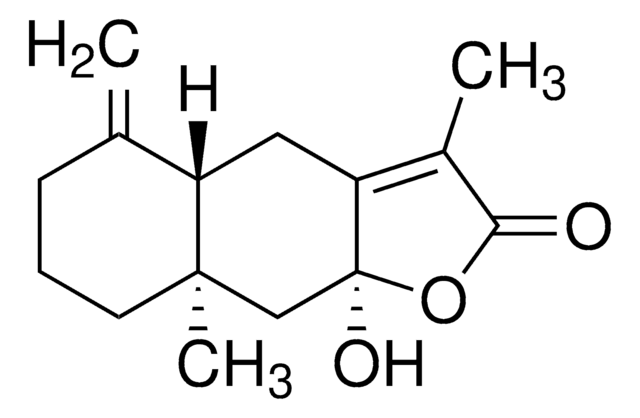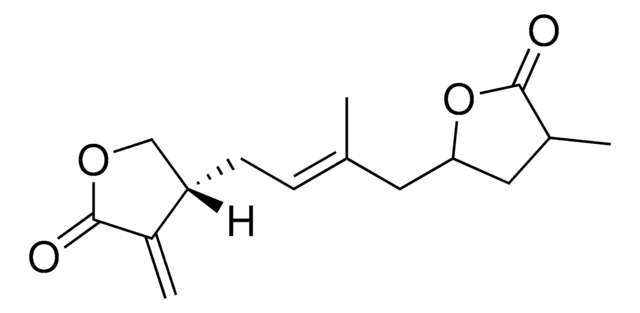SMB01000
Grandiflorenic acid
≥90% (LC/MS-ELSD)
Synonym(s):
(4S,5R,9R)-5,9-Dimethyl-14-methylidenetetracyclo[11.2.1.01,10.04,9]hexadec-10-ene-5-carboxylic acid, Kaura-9(11),16-dien-18-oic acid
About This Item
Recommended Products
biological source
plant
Assay
≥90% (LC/MS-ELSD)
form
solid
mol wt
300.44
solubility
water: slightly soluble
application(s)
metabolomics
vitamins, nutraceuticals, and natural products
storage temp.
−20°C
InChI
1S/C20H28O2/c1-13-11-20-10-7-15-18(2,16(20)6-5-14(13)12-20)8-4-9-19(15,3)17(21)22/h6,14-15H,1,4-5,7-12H2,2-3H3,(H,21,22)/t14?,15-,18+,19+,20?/m0/s1
InChI key
RJIPNPHMQGDUBW-MZWQVCBVSA-N
Related Categories
General description
Application
Biochem/physiol Actions
Grandiflorenic acid shows moderate cytotoxic (IC50 15μM in RAW264.7 cells) and antiplasmodial activities (IC50 23μM against P. falciparum).
Features and Benefits
- High quality compound suitable for multiple research applications
- Compatible with HPLC and mass spectrometry techniques
Other Notes
Storage Class Code
11 - Combustible Solids
WGK
WGK 3
Flash Point(F)
Not applicable
Flash Point(C)
Not applicable
Choose from one of the most recent versions:
Certificates of Analysis (COA)
Sorry, we don't have COAs for this product available online at this time.
If you need assistance, please contact Customer Support.
Already Own This Product?
Find documentation for the products that you have recently purchased in the Document Library.
Our team of scientists has experience in all areas of research including Life Science, Material Science, Chemical Synthesis, Chromatography, Analytical and many others.
Contact Technical Service